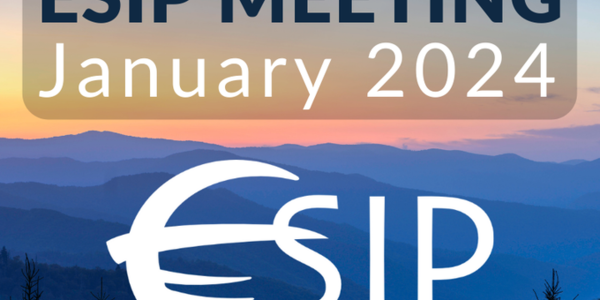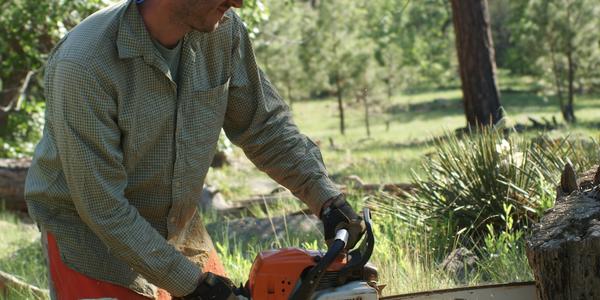
Here at NCEI, we aren’t just data—we are people. In our Humans of NCEI series, meet the awesome minds that manage one of the largest archives of atmospheric, coastal, geophysical, and oceanic research in the world. Get to know Christina "Chrissy" Maurin, the Dataset Section Chief.
What is your job title?
Dataset Section Chief.
What is your specific area of expertise?
In-Situ Datasets and Climate Prediction.
What was your first job? How did it prepare you for your current position?
My first job ever was as a cashier in a garden nursery. I truly believe everyone should experience a stint in customer service. It teaches patience for dealing with all kinds of people, as well as will give you empathy for the customer service employees you encounter in the future. My first job in the career field was working as a contractor for the National Weather Service (NWS) Meteorological Development Lab (MDL). It was a crash course in programming in an operational framework. I greatly value my experience in this position—it was very structured and a fast-paced development and Research to Operations (R2O) environment that really bolstered my technical skills.
How did you end up at NCEI?
I've had quite a journey so far in my career. I started in the D.C. area as a contractor with the National Weather Service (NWS) in MDL and then the Climate Prediction Center (CPC). I was hired as a federal employee of CPC in 2017, where I spent three years working as a forecaster and managing a dataset of in-situ weather station data. In 2020, I took a position with the U.S. Air Force in the 14th Weather Squadron, where I worked with the ingest and processing of several in-situ data sources, and then later, the climate monitoring, analysis and prediction team creating tailored material for regional interests of the Department of Defense and other partners.
What does a usual workday look like for you?
I am a recent management hire for NCEI, so my day is still evolving as I learn more about the organization and my section in particular. Currently, it involves a lot of listening and absorbing from the breadth of knowledge that I am surrounded by. I am learning about the great connections we have internally in NCEI and NOAA and externally within the weather and climate community. It also involves making sure that the needs of my section are well-represented to other parts of the organization, and vice versa.
What question are you asked most often when someone finds out what you do? How do you respond?
In my past positions, I was in the meteorology job series, so (as many others are also often asked I’m sure), I would frequently get asked if I was on TV. Now, with NCEI, I mostly get asked what the center does overall. I typically explain the different observed weather and climate data systems we collect from, and how that supports the government and scientists world-wide.
What sort of training and education would one need for your job?
The products and projects in the dataset section pertain to a wide variety of fields, so many different disciplines could be useful for this job, but specifically, a geoscience background and understanding of observed weather data would serve as a good basis. For the supervisory aspect, there are a lot of skills that make a successful supervisor outside the traditional training and education that are more easily put onto a resume—empathy, listening, problem solving, and strong communication skills.
What inspired you to pursue a career in your field?
I’ve always loved nature and science, so studying environmental science and climatology in college seemed like a good fit (though it did take a year or two of other disciplines to decide that). The scientific programming portion of the field was something I immediately took to; programming is like a big puzzle game that I enjoy getting lost in. Throw in a desire to help others, and a career in a science-based government organization like NOAA was a clear winner.
What projects are you working on now? Are there any upcoming projects that you are excited about?
My section has some exciting projects that are going operational this summer—Global Historical Climatology Network (GHCN)-hourly being a big one, and the extension of the the High Resolution Infrared Radiation Sounder (HIRS) Channel 12 (Ch12) Climate Data Record (CDR) using Infrared Atmospheric Sounding Interferometer (IASI) simulated HIRS data. We also have projects being supported by the Bipartisan Infrastructure Law (BIL) that will enhance data availability and user access.
What is your favorite aspect of your job?
I really enjoy working with the people within my section. I was lucky to come into a section filled with well-established people who have a wealth of knowledge. They have helped me to gain insights and understanding of NCEI as an organization, its predecessors, the historical growth of the products created inside and outside of the section, and options for the future.
What challenges have you had to deal with in your career?
I've been very lucky to have found a great network during my career in the government that has been supportive of my career growth. I'd say many of the toughest challenges I've dealt with have been internal—squashing the "imposter syndrome" fears, being comfortable with speaking out and asking tons of questions, and gaining confidence in my own abilities and decision-making.
Who are you outside of your career?
I live in Asheville with my husband, Pat, and our two dogs, Lando and Gemma. We love getting out into the mountains and hiking when possible. I am a self proclaimed foodie—both cooking in my own home and trying all different cuisines out and about. I also frequent pub trivia in Asheville, where I particularly excel at music trivia.
Last country you visited?
My husband and I went to Greece last August, spending time in Santorini and in Athens. Santorini was beautiful with the dramatic seascapes and iconic white buildings, but we both really fell in love with Athens–ancient history around every corner integrated into the city scape and some of the best food we’ve ever had!




